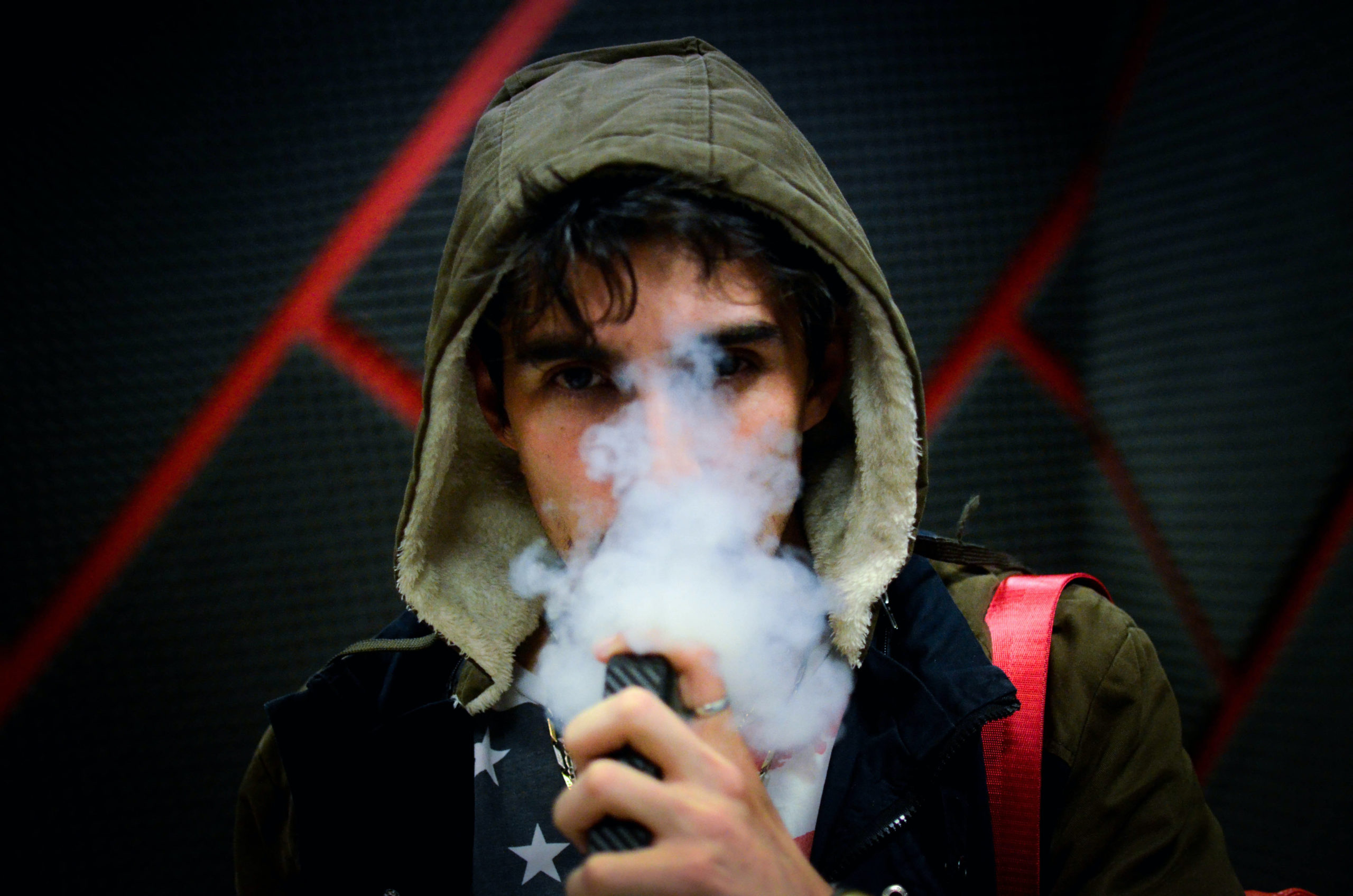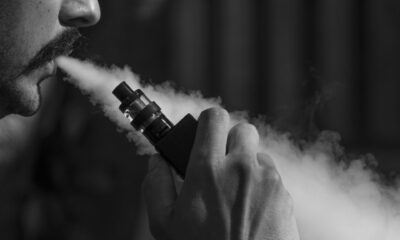
News

High rate of teen vaping sets off smoke alarm
With one in four matric students at high-income schools vaping, medical specialists are calling for the use of e-cigarettes to be banned, especially among teenagers, due to its sometimes devastating effects.
Heart and lung damage. Mood and attention disorders. Addiction. With these and other potentially devastating side effects, vaping is a far cry from the innocuous habit it’s popularly believed to be.
“Vaping isn’t harmless,” says Dr Anton Meyberg, a specialist physician and pulmonologist at Linksfield Clinic in Johannesburg. “It’s not water vapour, it’s a drug, it’s addictive, it’s expensive, and it’s dangerous.” He argues that vaping should be banned, particularly amongst teens.
Professor Richard van Zyl-Smit, a professor of respiratory medicine at the University of Cape Town who conducted the recent study that revealed the high numbers of vaping students at private schools, is also calling for speedy implementation of regulations governing vaping among adolescents. Van Zyl-Smit is concerned about the detrimental impact of nicotine on developing teenage brains. The African Tobacco Control Alliance made a similar appeal in May this year.
Our community isn’t immune. Though they’re educating their students about such dangers, Jewish high schools say that vaping has become a massive issue on campus.
A popular alternative to smoking, vaping involves inhaling and exhaling vapour that contains nicotine, flavouring, and other substances through a battery-powered device – an electronic cigarette – designed for this purpose. Unlike cigarettes however, there’s no tobacco present, which is why vaping has been billed as safer than smoking.
Yet, when Meyberg is asked which is worse, vaping or smoking, he always answers by comparing getting hit by a car or a motorbike. “You’re still being hit, and you’re still likely to have a major injury,” he says. “There are still dramatic negative health consequences from using a vape.”
“You’re taking aerosol, you’re getting unfiltered chemicals into your lungs that leave toxins behind. These chemicals include cancer-forming agents that are added to these vapes, and flavours, which are damaging the body at a cellular level. As you inhale, the many substances in the vape damage your lungs, attack your blood vessels, and can cause heart damage and asthma.”
There’s even a name for the inflammatory response that the practice triggers in the lungs – e-cigarette or vaping use associated lung injury (EVALI). “This can cause lung damage, pneumonia, a chronic cough, or shortness of breath,” Meyberg says. “We’ve had patients go onto ventilators and even die because of it.”
“In the beginning, vaping was a novelty, but we’re beginning to find far too many students are bringing these gadgets onto campus,” says Tom Johnson, the deputy principal of King David High School Linksfield (KDHL), who says the phenomenon is a “major issue”.
Finding students vaping is a daily occurrence, he says. “It’s also quite difficult to police because whereas before, with traditional cigarettes, you looked like a steam train going down the tracks, now you can stand on the school grounds and no one would know that you’re vaping – it’s far more discreet than before and often odourless.”
Vaping goes against the school’s code of conduct, he says, which has an anti-smoking policy that includes e-cigarettes. Vapes are confiscated, students are given detention, and parents are informed and asked to collect the vapes as the school won’t return them to the students.
At King David High School Victory Park, vaping is also dealt with firmly, and is regarded as serious misconduct. “As a school, we’re concerned about the increased prevalence of vaping amongst our students,” says counsellor Gita Lipschitz. “As such, Dr Anton Meyberg, an alumnus of our school, recently spoke to the students about the devastating effects of vape on the lungs, brain, and emotions of teenagers.”
Nicotine itself, Meyberg told the SA Jewish Report, is highly addictive. “We’re finding that teens who are vaping regularly are getting addicted to nicotine much quicker. They don’t realise that some of these mechanisms, like the Juul – a brand of e-cigarette shaped like a USB flash drive – has about 20 cigarettes worth of nicotine per cartridge, which is a big problem.” It’s particularly concerning since we’re even seeing vaping in 12-year-olds.
Teenage brains are still developing, so they are far more susceptible to nicotine addiction. “When you take in large amounts of nicotine, it releases dopamine in the brain, which is a pleasure hormone, making you want more,” Meyberg says. “Therefore, you get into a cycle of repetitive use. Nicotine exposure during adolescence can disrupt growth of your brain circuits, so you get attention deficit disorders, learning difficulties, as well as mood disorders, in which kids become angry, short-tempered, anxious, and lack impulse control.” Many vapers add tetrahydrocannabinol (THC), the principal psychoactive substance of cannabis, to their vapes – a major concern, Meyberg says.
“With aggressive advertising campaigns specifically targeting young people, some parents see vaping as harmless,” says Lipschitz.
“Though a majority of parents are anti-smoking in any form, some will defend their Grade 11 or 12 children in these cases, saying they’re under stress, they’re writing exams,” says Johnson.
Indeed, says Meryl Malkin, the head of counselling and the education support programme at KDHL, many kids talk about the sense of relaxation and lessened anxiety that comes with vaping.
“Parents often buy vapes for their children and prefer them to vape rather than smoke,” says Herzlia High School Principal Marc Falconer. He says primary school students as young as 11 and 12 have been known to vape. He estimates that between 20% to 50% of the students at the high school vape, and says it’s a disciplinary issue. “Most schools, including ours, view vaping in the same light as smoking, and it carries the same penalties,” he says.
Psychologically speaking, says Malkin, adolescents are trying to figure out who they are in the world and as such, they sometimes try to push boundaries. “We know that the adolescent brain, namely the prefrontal cortex, isn’t fully developed and teens therefore make decisions that aren’t always fully informed or based on logic,” she says. “That’s why when they are taught about the dangers of vaping at school, their brains are wired to say, ‘It’s not going to happen to me.’”
“It’s a lot about fitting in and belonging to a group,” says Caryn Horowitz, a psychologist at Yeshiva College Girls High School. “It’s seen as cool and trendy. It could also be a form of attention seeking.”
There are no guidelines or regulations for vaping production in South Africa, although the government has tabled a Bill to regulate the sector. The Control of Tobacco Products and Electronic Delivery Systems Bill was recently approved by cabinet to be submitted to Parliament in October, four years after it was first introduced by the health department. Yet, there doesn’t seem to be a timeline for when it will be passed or clarity around whether it will be enough to regulate the sector for teens. What’s more, the vaping industry has rejected this Bill, calling for separate legislation so it is not subjected to the same restrictions and regulations as the tobacco industry.








